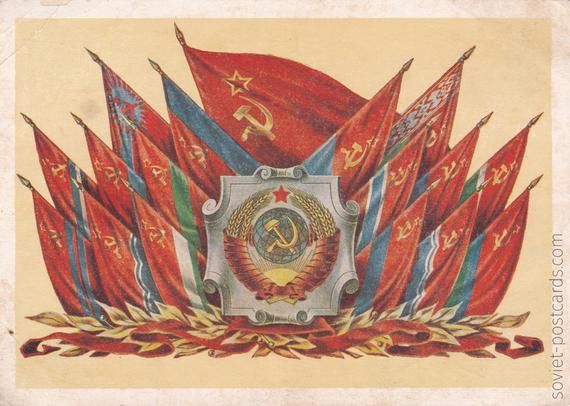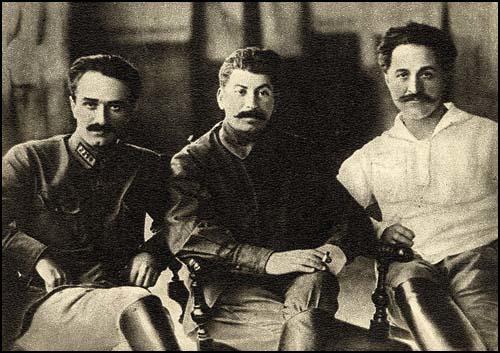
Person
Within Stalin's letters, as we might expect, we see various references to individuals within the highest echelons of Soviet society as well as to lesser-known figures. Throughout the letters, Stalin comes across as someone who is meticulously up-to-date on what is happening within the Soviet Union. Whether it be a displeasing artlce published in Pravda or holdup in steel production, he is very aware. This hawkish view of the Soviet Union leads Stalin at various times to denouce, publicly or privately, to excoriate members of the Sovet government who are percieved to be doing a poor (worse, corrupt) duty of administraion.
Places
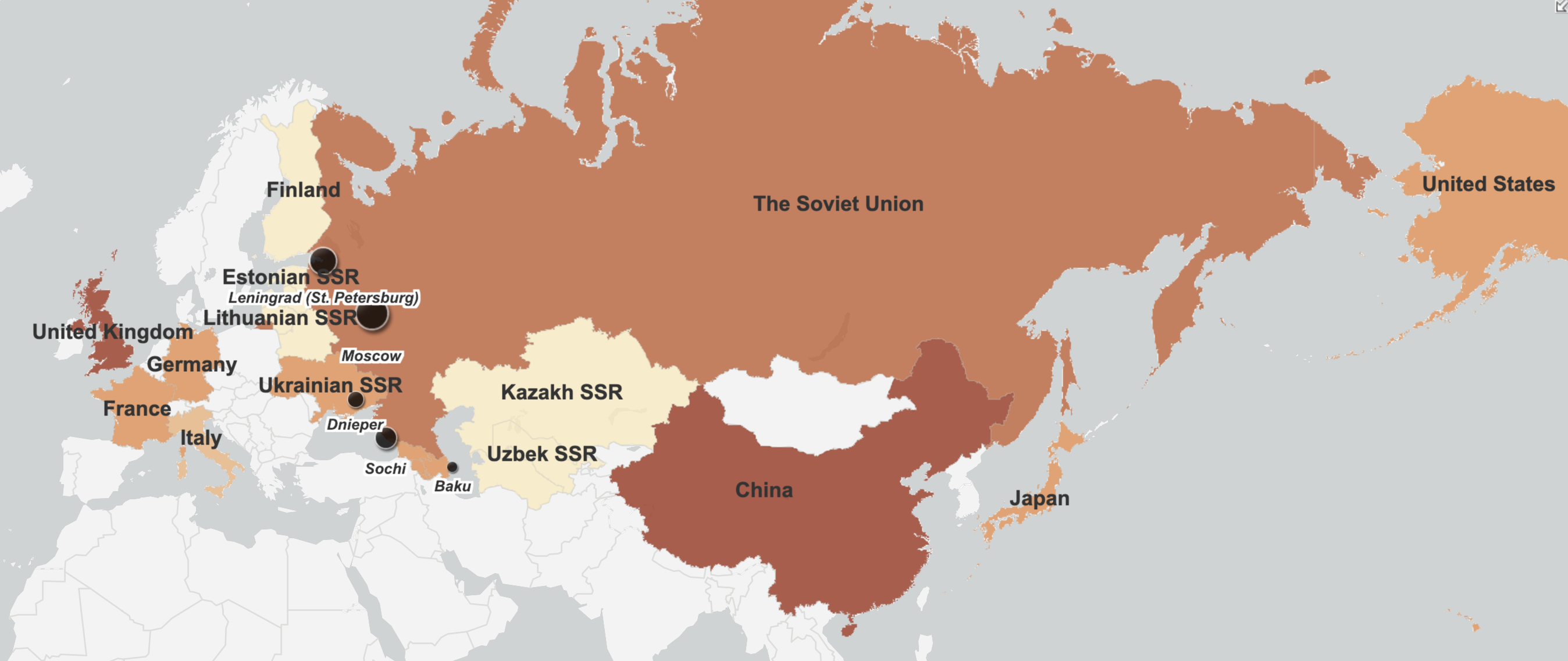
The darker colors
and larger dots signify higher frequency of appearance in Stalin's Letters.
Click here to explore the interactive map!
It is hard to overstate the vastness of the Soviet Union. Soviet
power stretched from the temperate Black Sea climate, winding through the
Ukrainian region into the heart of European Russia, extending itself along the
expanse of Asia to reach the Pacific Ocean and border Japan. Much before the
time of Stalin, Tsars and their ministers grappled with the problems of overland
empire, forging solutions such as the Trans-Siberian Railroad. Many of these
projects were successes for commerce but became a source of humiliation when the
Russians lost territory to Japan (an upstart power) in the Russo-Japanese War of
1905.
The role of the place in the Stalin-Molotov
correspondence is an important one, suggestive of priorities in Stalin's view of
the USSR and the world around it. We see, of course, mentions of cities and
regions within the Soviet Union, including references to autonomous republics
within the federal structure. Especially important to Stalin are the regions
associated with his primary policy agendas: industrial hubs, urban centers,
sites of agricultural output. However, it is impossible to deny that Stalin had
his eyes abroad in many of these letters. This is supported by the data which
was extracted from the documents.
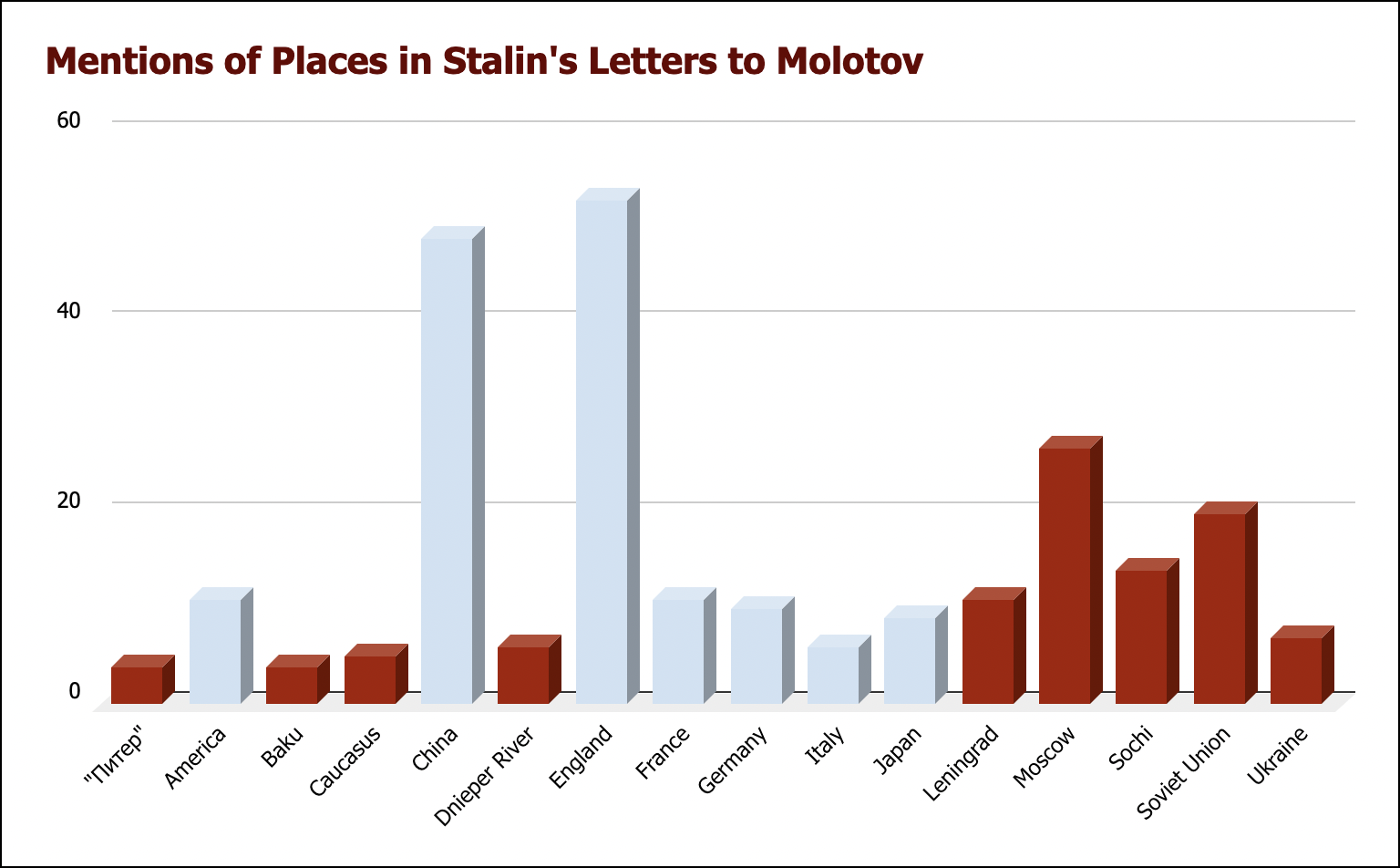
Digital methods, particularly the linking of various digital tools at the disposal of a modern researcher, enables a whole new world of statistical analytics. There are a lot that we as students can gain from employing digital methods in conjunction. For example, the example above shows the initial markup of the corpus set the stage for our research avenues.
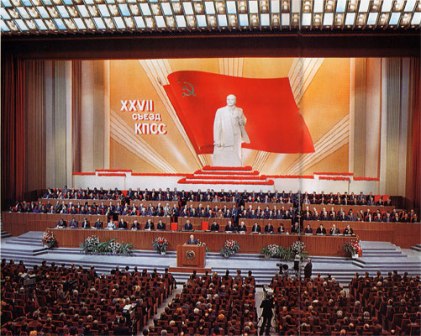
Agency
The Soviet Union was dominated by variou agencies of control which sought to regulate a societ aimed towards socialism. Even as Stalin made effective use of the various bureaucracis under his common through vigorous leadership, it is impossible to deny that Soviet agencies, with their lack of constructive communication, retarded the development of the emerging socialist state. However, for a system that exchewed western methods of ascertaining expertise, government agencies become sought-after employment amongst the Sovet citizenry. Especially with the advent of Brezhnev era, with its perks for employees of state agencies, most turned towards working for the state in some capacity
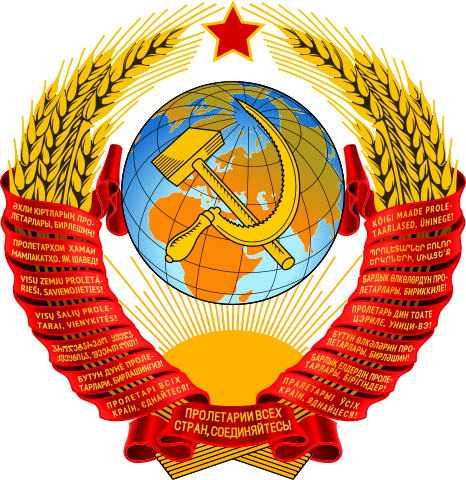
Ideology
As a Marxist-Leninst state firmly committed to its ideolody in the face of the "captilist powers" which the USSR believed to their enemies through their interpretation of history, I was expecting to find high levels of ideological discussion within the corresponse of Stalin to Molotov, but there was not as much in that area as I expected. Certainly one encounters the Marxist interpretation of history in explications of what is happening in the West (or the prudence of the collectivation policy) but that is not necessarily the case. What we find in Stalin is an effective adminstrator, one who is concerned with the successful completion of industrialization and an understanding of world politics.
Person

Within Stalin's letters, as we might expect, we see various references to individuals within the highest echelons of Soviet society as well as to lesser-known figures. Throughout the letters, Stalin comes across as someone who is meticulously up-to-date on what is happening within the Soviet Union. Whether it be a displeasing artlce published in Pravda or holdup in steel production, he is very aware. This hawkish view of the Soviet Union leads Stalin at various times to denouce, publicly or privately, to excoriate members of the Sovet government who are percieved to be doing a poor (worse, corrupt) duty of administraion.
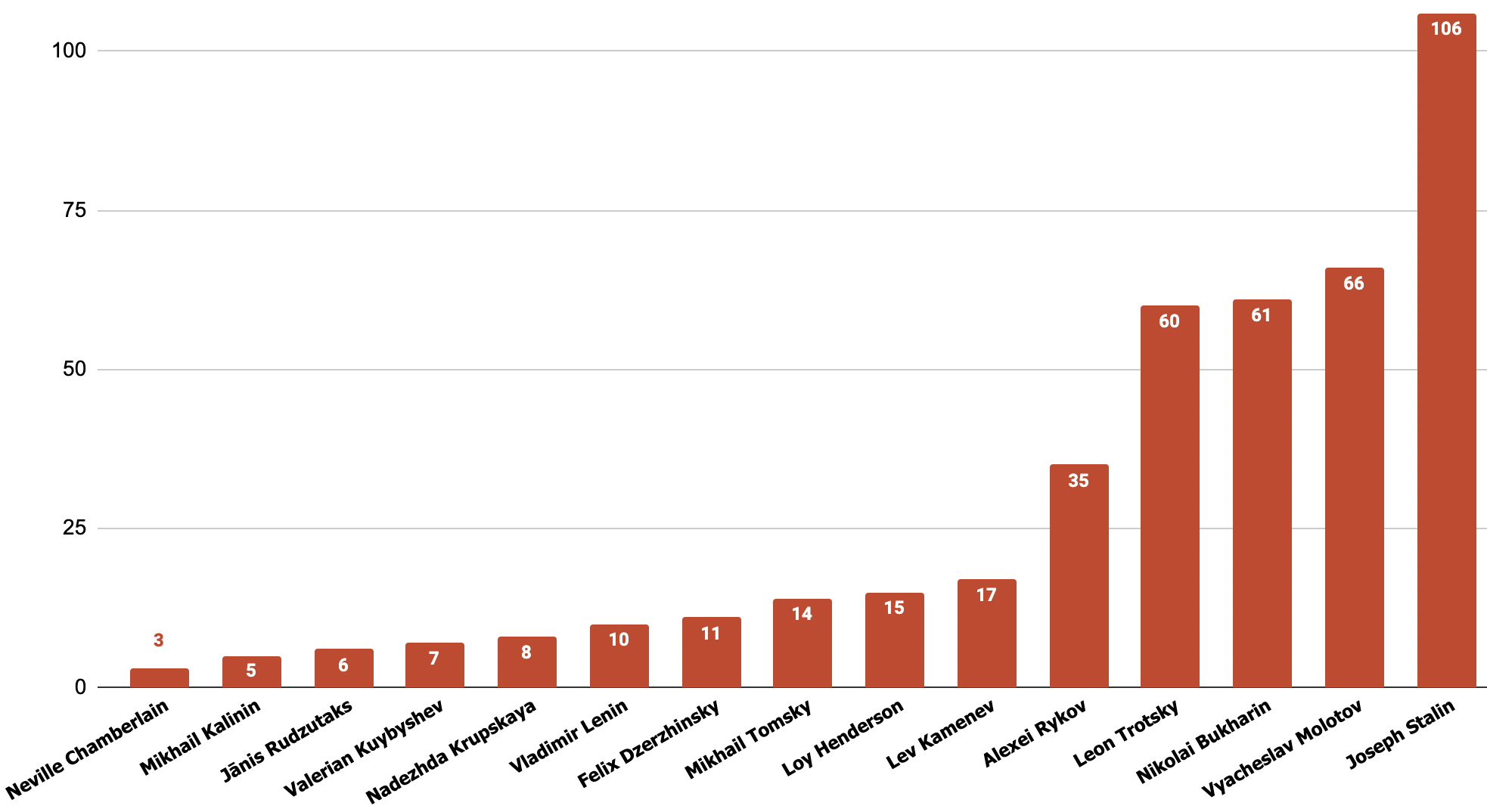
Here are the sorts of XPath expressions we'd use to get a handle on the
numbers of a certain element and attribute, in this case span elements and
@class and @title attributes. //*[@class="person" ] 513 items
//*[@class="person" ][@title="Grigori Zinoviev"] 71 items
//*[@class="person" ][@title="Felix Dzerzhinsky"] 11
//*[@class="person" ][@title="Nadezhda Krupskaya"] 8
//*[@class="person" ][@title="Alexei Rykov"] 35
//*[@class="person"
][@title="Valerian Kuybyshev"] 7
//*[@class="person" ][@title="Jānis
Rudzutaks"] 6
//*[@class="person" ][@title="Mikhail Tomsky"] 14
//*[@class="person" ][@title="Loy Henderson"] 15
//*[@class="person"
][@title="Vladimir Lenin"] 10
//*[@class="person" ][@title="Mikhail
Kalinin"] 5
//*[@class="person" ][@title="Neville Chamberlain"] 3
Always seek help on StackOverflow and W3Schools, then
remember what works!
Policy
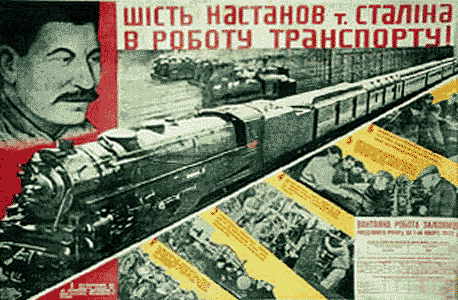
In the years leading up to the 1917 Revolution, there were many years of productive and economic growth, largely driven through investments of foreign capital as well as a liberalizing administration. However, high levels of growth were only sustainable until the outbreak of World War I, which sealed the fate of the Romanov dynasty. After Nicholas II abdicated, the progressive Provincial Government attempted to implement a series of economic liberalizations. Their efforts were rendered useless by their continued support for an unpopular war and the rise of social movements of all kinds. With that background in place, we move on to the role of policy in the USSR. Whether one thinks of collectivization or socially engineered salaries, played an integral part in the Soviet system. Stalin, like his predecessor Lenin, believed that the key to Soviet independence was the establishment of massive industrial power. However, you can take a peek at the chart below to judge for yourself.
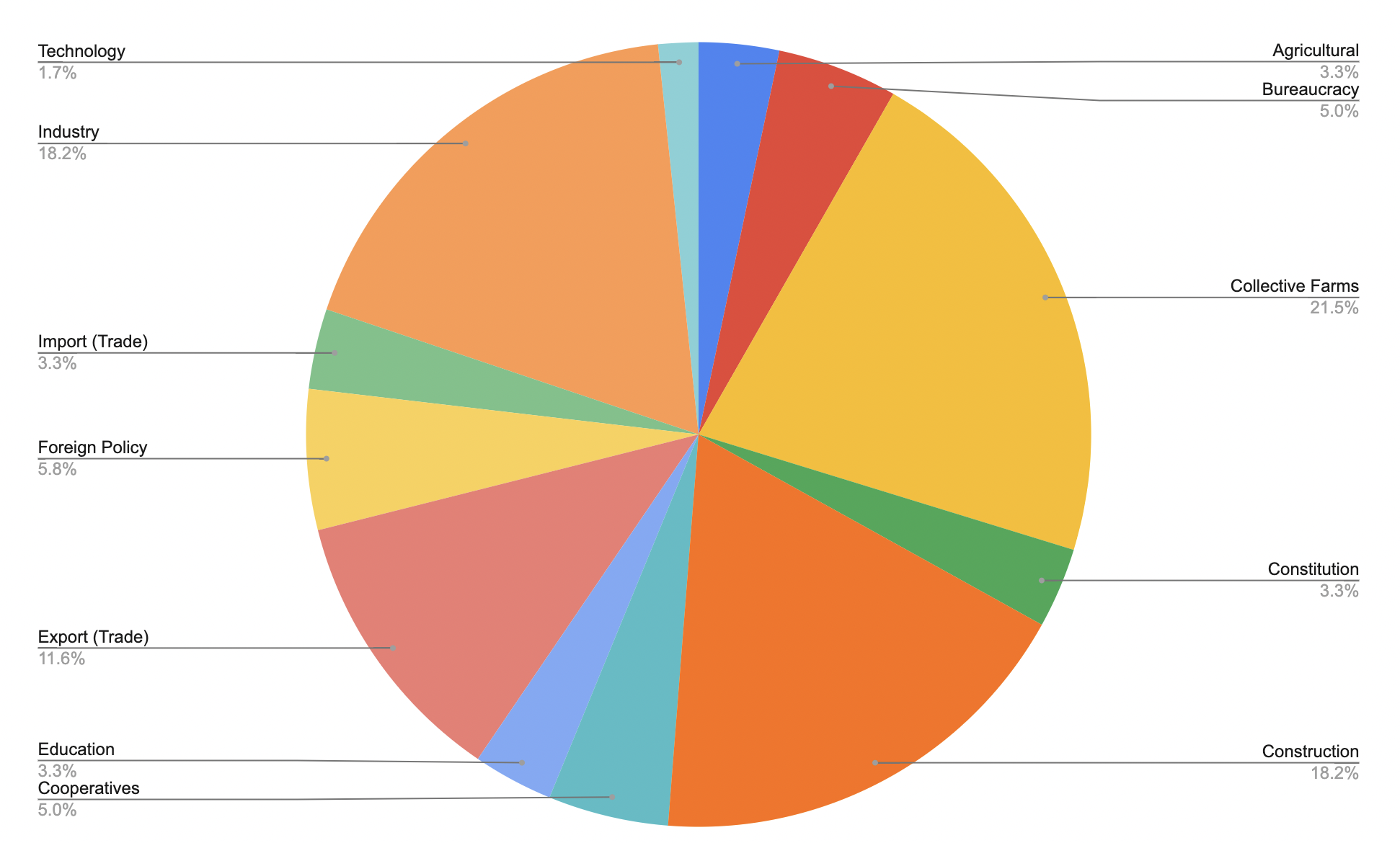
In tagging "policy" within the document, we had to employ a relatively liberal
method. For example, mentions of factory construction is tagged as policy due to
the heavy state involvement and coersion within enterprise. Readers with an
understanding of the history of Stalin's rule will not be surprised by the heavy
focus on collective farms (колхозы) and the industry (заводов) which came with
the end of the NEP period. It remains important to remember that this is not a
true sample of Stalin's letters, merely those sent to one trusted deputy over
the years. But nonetheless, it is remarkable the extent to which matters of
practical policy, construction, and trade are overseen by Stalin.
Click here to download the raw data (with line numbers) which went into the graph. Click here to download the
Stalin-Molotov letters (in Russian)
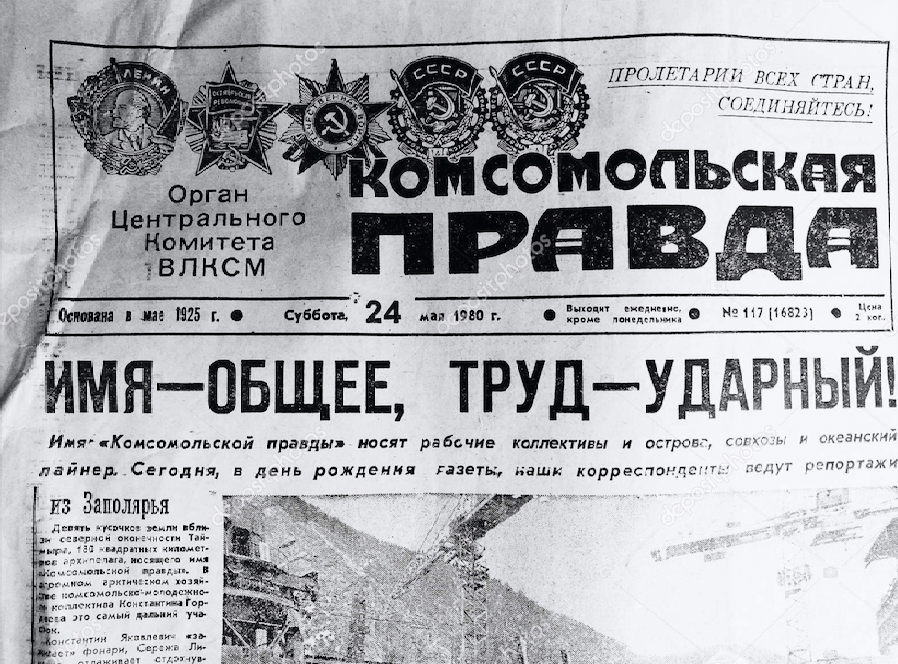
Publication
Publications, as one would likely imagine, were particularly limited in the Soviet Union. Discourse on the public stage, to the extent where it did exist, was often conducted through official channels or magazines lie Pravda or Komsomolsya. Since publication was so centralized, a commom theme in Stalin's letters is discussion of articles in the newspapers which Stalin vehemently disagrees with, For example, as time progresses, we see specific instances of criticism of Bukharin and Trotsky appear.
